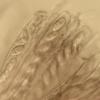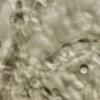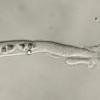
18-12-2025 21:17
Pol DebaenstThe identification took me to Byssonectria deformi

15-12-2025 07:09
 Danny Newman
Danny Newman
indet. Rutstroemiaceae sp. on unk. fallen leavesMc

19-12-2025 10:10
Patrice TANCHAUDBonjour, récolte réalisée en milieu dunaire, a

18-12-2025 17:23
 Bruno Coué
Bruno Coué
Bonjour,je serais heureux d'avoir votre avis sur c

18-12-2025 18:07
Margot en Geert VullingsThese plumes were found on rotten wood.They strong

17-12-2025 18:35
 Michel Hairaud
Michel Hairaud
Bonjour à tous/Hi to everyone I am passing along

15-12-2025 15:48
 Danny Newman
Danny Newman
Melanospora cf. lagenaria on old, rotting, fallen

15-12-2025 15:54
 Johan Boonefaes
Johan Boonefaes
Unknown anamorph found on the ground in coastal sa

15-12-2025 21:11
 Hardware Tony
Hardware Tony
Small clavate hairs, negative croziers and IKI bb
Summarizing the few topics about Rutstroemia maritima here on the Forum and the description of R. calopus in the article "Estudio de la micobiota de los ecosistemas dunares de la Peninsula Ibérica e Islas Baleares"
produces the following:
R. paludosa - R. calopus - R. maritima
Cyperaceae + Juncaceae - Poaceae - Ammophila arenaria
long stalk - short stalk - sessile or very short stalk
no real croziers - croziers - croziers
amyloid - amyloid - non-amyloid
and the conclusion that this complex still needs further study.
But the last topic is dated 2021 and perhaps new insights have now been emerged?
So, once again a Rutstroemia/Clarireedia maritima, R. calopus var or some spec.
The substrate consists of the decaying spikelets of Ammophila arenaria, habitat is a small sand drift in the grey dunes.
The ascocarps are sessile-short stalked, the color is pale reddish-brown.
The asci are non-amyloid and they have croziers.
Spores measured (14) 12.0-17.0 x 5.0-7.0 mu, with small droplets.
Parafyses cilindric and a bit longer than the asci.
I think it should be C. maritima, but does C. maritima now exist?
thanks and regards
Bertien Roelandse

I thought the Clarireedia's were picky enough about their hosts to deserve their names, but you're right, thoughts are usually not enough in mycology.
My lovely Clarireedia's will have to wait until the specialists can prove that they are what they are. Too bad!
In any case, thanks for your answer.
Bertien

Thanks for your beautiful last sentence, it is a nice way to end my story about 'Clarireedia maritima'.
Bertien









